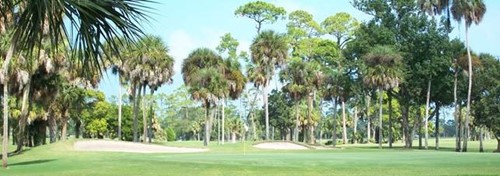
For Immediate Release
Friday, December 16, 2016
Contact: Meredith Beatrice, 850.245.6522
[email protected]
Daytona Beach Golf Club South Course Featured as Florida Historic Golf Trail Course of the Month
Tallahassee –
Secretary of State Ken Detzner announced today that the Daytona Beach Golf Club South Course, located in the City of Daytona Beach in Volusia County, has been chosen as the featured course on the Florida Historic Golf Trail for the month of December.
“We are pleased to feature the Daytona Beach Golf Club South Course as a partner on the Florida Historic Golf Trail,” said Secretary Detzner. “Located steps away from the area’s world-famous beaches, this golf course designed in 1921 by Donald Ross in a beautiful natural Florida setting, continues to challenge today’s golfer.”

Image Courtesy of Daytona Beach Golf Club
Opening as the Daytona Golf and Country Club, the South Course was designed by the renowned golf course architect Donald Ross and built under the supervision of club president Carl H. Knappe. After eighteen months of preparation and hard labor, the first nine holes of the course were formally opened in 1921. The completed 18-hole golf course opened in January of 1923. In 1944, Ross returned to Daytona Beach to redesign several of the holes and greens. In 1997, the course was redesigned by Lloyd Clifton, who had served as South Course greenskeeper in the 1950s.
Today, the 18-hole, par-71 South Course at the Daytona Beach Golf Club features three sets of tees playing from 5,100 to 6,200 yards. The course still follows some of the original routing laid out by Donald Ross and winds through dense areas of live oak and pine trees. With few water hazards, tee shots can be very forgiving, but approaches are demanding if players want to get close to the flag stick on the greens.
"The City of Daytona Beach is honored to be featured this month on the Florida Historic Golf Trail” said Director of Golf Brian Jaquet. “The Donald Ross course was opened in 1921 and has been a continual favorite among Daytona Beach residents.”
For more information about the Daytona Beach Golf Club or the Florida Historic Golf Trail program visit Daytona Beach Golf Club , Florida Historic Golf Trail or Facebook.com/FloridaHistoricGolfTrail.
# # #
About The Florida Historic Golf Trail Florida's golf history, recognized as one of the oldest in the nation, dates back to the late 1800s when a number of early courses were created along with the development of railroads and hotels in the state. The Florida Historic Golf Trail is a collection of more than 50 historic, publicly accessible golf courses throughout the state that can still be played on today. Through the Florida Historic Golf Trail, golfers can play on courses designed by world-class architects and played by famous golfers such as Bobby Jones, Walter Hagen, Gene Sarazen, Babe Zaharias, Arnold Palmer and Jack Nicklaus. Information about the history and current day contact information for each partner course can be found at FloridaHistoricGolfTrail.com. Find the historic course near you and Come Play on History!
About The Division of Historical Resources The Florida Department of State’s Division of Historical Resources (DHR) is responsible for preserving and promoting Florida’s historical, archaeological, and folk culture resources. The Division Director’s office oversees a grants-in-aid program to help preserve and maintain Florida’s historic buildings and archaeological sites; coordinates outreach programs such as the State Historic Markers program and the Florida Folklife program which identifies and promotes the state's traditional culture. DHR directs historic preservation efforts throughout the state in cooperation with state and federal agencies, local governments, private organizations, and individuals. The Division director serves as the State Historic Preservation Officer, acting as the liaison with the national historic preservation program conducted by the National Park Service. The Division is comprised of two Bureaus, archaeological research and historic preservation. For more information visit flheritage.com.
